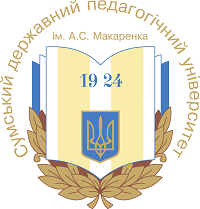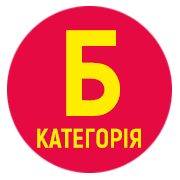STATE OF PHYSICAL HEALTH OF VMI RECIPIENTS
DOI:
https://doi.org/10.32782/olimpspu/2024.3.10Keywords:
physical health, physical education, students, indicators, higher educational institutionAbstract
The article considers physical education as a pedagogical process that is aimed at achieving physical perfection, it is necessary, first of all, to highlight its main factors such as health, during the implementation of which the forms and functions of the human body are optimized, which develops and increases the level of physical (motor) abilities and qualities ; educational, which expands and improves the scope of knowledge, motor skills and abilities of the students of education. The effectiveness of physical education is largely determined by priority approaches to the optimization of constituent factors. The specific weight (ratio) of health-improving and developmental factors in the educational process should first of all be determined by the physical health (the level of compliance with the norm of indicators of the body’s functional systems) of higher education students. With the normal condition of the functional systems of the organism of the students of the institution of higher education (hereinafter referred to as higher education institution), both factors can be implemented in the educational process in the optimal amount. If the level of physical health is unsatisfactory, first of all, it is necessary to determine the means and methods of its normalization, after which start the implementation of the health-improving task. At the same time, it is possible to solve educational tasks related to mastering the program volume of knowledge, skills and abilities. The amount of knowledge, skills and abilities required by the acquirers is determined by current regulatory documents. At the same time, physical exertion should not exceed the adaptive capabilities of the body. This requirement fully refers to the development of such motor abilities as flexibility and agility, and with a number of limitations to general endurance. The study of the peculiarities of the level of physical health of students of higher education is one of the topical topics of physical education.
References
Гордієнко О.І., Мовчан, В.П. Шляхи удосконалення рухової активності студентів в умовах дистанційного навчання. Rehabilitation and Recreation, 2022. № 10. С. 162-169.
Дудко М.В., Матійчук В.І., Хрипко І.В., Домашенко Н.О. Організація фізичного виховання студентської молоді в умовах дистанційної освіти. Наук. час. НПУ імені М.П. Драгоманова. 2022. № 11(157). С. 68–71. DOI: 10.31392/NPU-nc.series15.2022.11(157).16.
Корнієнко В., Кипич І. Оптимізація освітнього процесу шляхом впровадження дистанційного навчання під час воєнного стану. Проблеми інтеграції освіти, науки та бізнесу в умовах глобалізації. Київ. нац. ун-т технологій та дизайну. 2022. С. 51–52.
Лукавенко А.В. Вияв і динаміка функціональних показників студентів різних соматотипів протягом першого року навчання. Слобожанський науково-спортивний вісник. 2012. № 5–2 (33). С. 71–77. https://journals.uran.ua/index.php/1991-0177/article/view/21615.
Маракушин Д.І., Чернобай Л.В., Ісаєва І.М. та ін. Функціональні резерви організму як показник ефективності регуляторних процесів, що забезпечують адаптацію організму до дії факторів навколишнього середовища. Український журнал медицини, біології та спорту. 2020. Том 5, 1(23). С. 21–28. DOI: 10.26693/jmbs05.01.0216.
Мозолев О.М. Фітнес технології дистанційного навчання студентів з фізичного виховання. Scientific Collection «InterConf». 2022. №136. С. 414-418.
Мозолев О.М. Дотримання норм рухової активності студентів у період дистанційного навчання. Актуальні проблеми розвитку освіти в сфері туризму, фізичної культури і спорту. 2023. С. 177–180.
Мозолев О. Інноваційні форми фізичного виховання студентів в період дистанційного навчання. Grail of Science. 2022. № 12–13, С. 676–683. DOI: 10.36074/grail-of-science.29.04.2022.123.
Петренко Ю.І., Махонін І.М. Фізична активність студентів в умовах вимушеного дистанційного навчання з використанням інформаційних технологій. Науково-методичні основи використання інформаційних технологій в галузі фізичної культури та спорту. 2020. № 4. С. 60–63.
Попель С., Ставичний І. Фізичний розвиток і пропорційність тілобудови студентів 17-22 років. Вісник Прикарп. нац. ун-ту. Серія: Фізична культура. 2016. № 24. С. 100–106.
Самоленко Т.В., Янченко І.М., Бражник В.М. Використання інноваційних технологій за умов дистанційного навчання студентів у закладах вищої освіти. Наук. час. НПУ імені М. П. Драгоманова, Серія 5. Педагогічні науки: реалії та перспективи. 2021. № 80(2). С. 121–124. https://doi.org/10.31392/NPU-nc.series5.2021.80.2.25.
Сироватко З.В., Єфременко В.М. Вплив дистанційного навчання на рухову активність студентів. Наук. час. НПУ імені М.П. Драгоманова. 2022. № 3К(147), С. 363–366. DOI: 10.31392/NPU-nc.series15.2022.3К(147).78.







